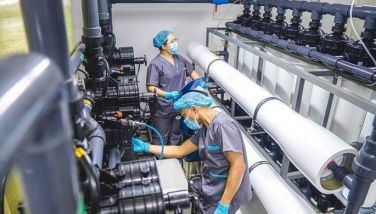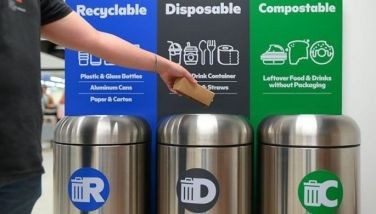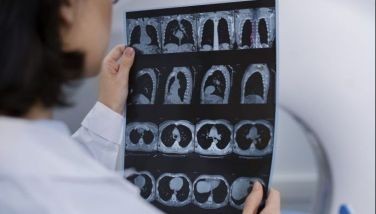The trillion-dollar club

Could we really join the trillion-dollar club, along with the big boys, including Canada or Italy or Brazil?
The president of the World Economic Forum (WEF) Børge Brende thinks so. He said the Philippines is poised to become a $2-trillion economy over the next decade if investments in key sectors such as education and human development are sustained.
Our reporter covering the public finance beat, Louise Maureen Simeon, posted this on X (formerly Twitter) on Tuesday afternoon after Brende held a roundtable discussion in Malacañang with members of the Philippine economic team led by Finance Secretary Ralph Recto.
“Brende says the WEF is ‘very bullish’ on the Philippines as it sees a lot of global business interest in the country. He notes that the Philippines has stable and sound fiscal and monetary policies,” Mau also said on X.
If WEF’s projections do come true, it would mean our economy would expand by five times its size now – roughly $400 billion at present.
Brende noted that there is keen interest from PBBM and the Cabinet to get rid of unnecessary red tape and create the right investments for future growth.
“Everything that can create even a more conducive environment for entrepreneurs and innovators [should be done].”
Attracting investments
This is all comforting to hear and it’s good to hope that it would happen but, as Brende said, there’s a lot of work to be done to get to this level.
While President Marcos has been traveling across the globe to attract investments, we should also work doubly hard to make the Philippines an attractive investment destination.
It certainly takes more than just wining and dining with potential investors in posh five-star hotels in different parts of the world to convince them to set up shop in the Philippines.
While these are all good and while I myself see the wisdom of Marcos’ trips to other countries – signaling that the Philippines is ready and open for business and fostering goodwill – it takes so much more than that to really convince investors to consider expanding here in our country.
Corruption
For one, the Philippines must really strive to fight corruption which has been deeply entrenched in this nation of 114 million.
The Marcos administration and all succeeding administrations must really fight this problem head-on, not sweep it under the rug.
In reality, it’s perhaps the biggest problem deterring our growth, even bigger than the so-called “restrictive economic provisions” in our Constitution and sadly, it affects everyone.
Everywhere we look there is corruption and red tape and every new system that is introduced in government to fight corruption eventually gives birth to yet another corrupted system.
For weeks now, I’ve been reading the memoirs of the late engineering tycoon David M. Consunji titled “A Passion to Build.”
I’m now in the part where he served as head of what is now the Department of Public Works and Highways. He said that when he accepted the post from Marcos Sr., he was surprised to find out that so much corruption existed in the Department of Public Works, Transportation and Communication or DPWTC back then.
This was in the 70s! And yet we still hear of such wide-scale corruption in government agencies and it’s not just a problem at the national level. It’s also rampant among local government units.
Now we have a resort built right at the foot of the majestic Chocolate Hills in Bohol, declared by UNESCO in 1988 as the country’s third National Geological Monument and Protected Area. How did we get here?
It takes a whole society to fight corruption and red tape in government.
The horror stories on corruption are still as endless as they are varied. We often hear that some lawmakers even have their own construction companies so they can get kickbacks from projects in their districts. We hear of permits and visas for sale as I exposed in this column earlier.
It’s sad that corruption is still so deeply embedded in our moral fiber as a society.
The way I see it, we must teach the younger generation to be better citizens so that this cycle of corruption comes to an end.
Long-term vision
We also need a long-term vision for the Philippines – a great big idea that would foresee what we need in the future. This would include a detailed plan on how our megacities would look decades from now to make it livable for both citizens and foreign investors.
As it is now, there seems to be no long-term planning, which only worsens the traffic in Metro Manila. Maskipaps or maski papa-ano nalang seems to be the practice.
We also need to foresee opportunities that we could take advantage of.
A recent story by the New York Times, for instance, put the spotlight on how Malaysia prepared for the tech boom decades ago, when it “energetically courted some of the world’s electrical and electronic superstars... It created a free-trade zone on the island of Penang, offered tax holidays and built industrial parks, warehouses and roads.”
So yes, while it’s not impossible to get a seat in the trillion-dollar club, it’s going to take a lot of fixing within our society to attract investors.
To borrow and tweak a famous break up line among couples, “it’s not you, it’s me.” I’d say, it’s not the foreign investors (that’s the problem), it’s us.
* * *
Email: eyesgonzales@gmail.com. Follow her on X, formerly Twitter @eyesgonzales. Column archives at EyesWideOpen (Iris Gonzales) on Facebook.
- Latest
- Trending



























